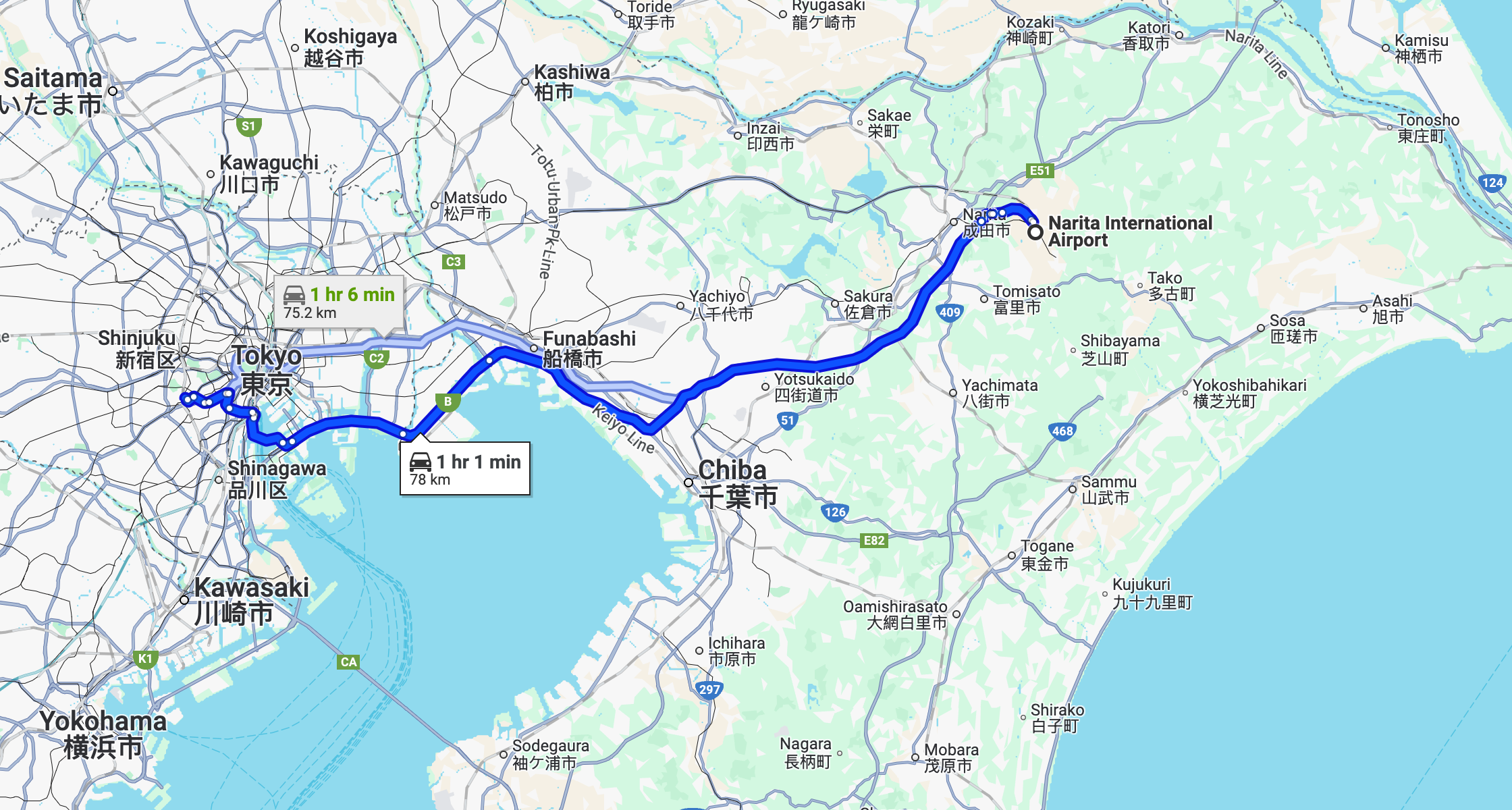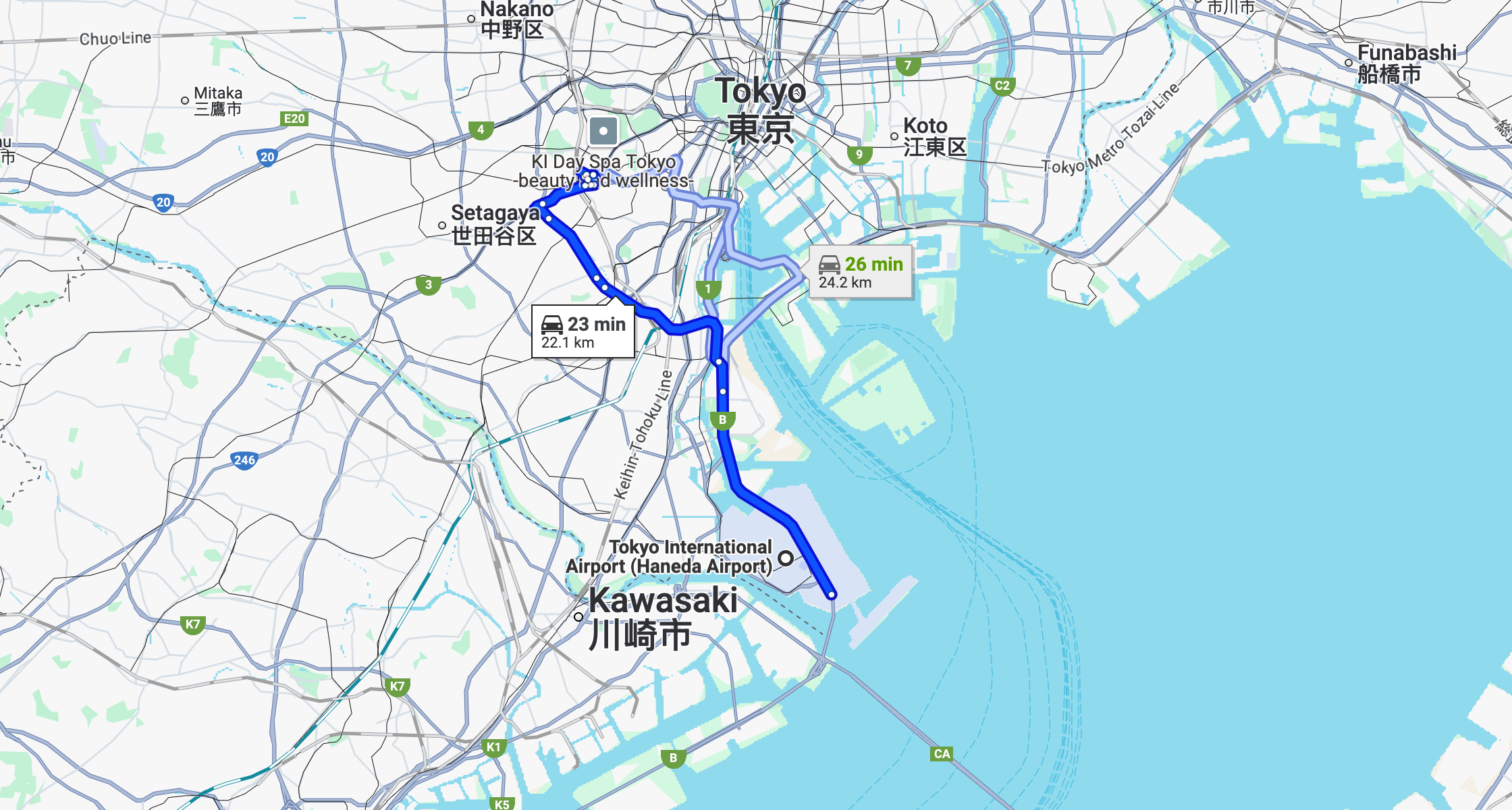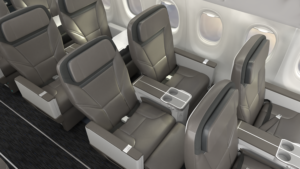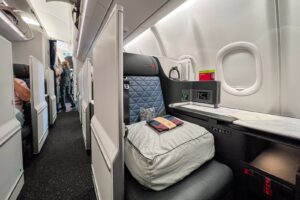Tokyo remains a perennial tourist favorite, attracting a record 36.8 million international visitors in 2024. So it makes sense that the city has two airports serving both international air traffic and domestic travel.
Narita International Airport (NRT), built in 1978, used to serve the most long-haul flights of the two travel hubs, but that is no longer the case. Of the two, Haneda Airport (HND) is now the busiest in terms of passengers, handling in excess of 78 million passengers annually, while Narita handles over 30 million each year.
Haneda’s international terminal opened in 2010, and by 2023, it was one of the world’s busiest airports. Since 2020, a number of U.S. airlines have added daytime flight service to and from Haneda. Carriers such as All Nippon Airways and Japan Airlines have also shifted most of their international flight operations from Narita International to Haneda, the primary reason for the shift being location.
But with plenty of flight options to each, deciding which of the two airports you should fly into can be tricky. Thankfully, we’ve weighed up the features of both so that you can make the most informed decision before booking your flight.
Distance to downtown and transportation options
Tokyo is the world’s most populated city, with over 37 million residents, and it covers roughly 800 square miles. Its sheer size makes defining a true city center difficult. Tokyo has over 20 wards, each comprising several different districts.
For this post, we will use the iconic Shibuya Crossing in downtown Tokyo as our reference point. It’s known as the busiest street in the world, where as many as 2,500 people at a time cross a single intersection at certain points in the day.

Here’s how the two airports stack up in terms of travel time and the cost of public transportation or taxi to this central point:
| Getting downtown | NRT | HND |
| Distance (by car) | 47 miles | 13 miles |
| Time (by car) | 1 hour and 30 minutes | 40 minutes |
| Average taxi cost | 23,000 to 30,000 Japanese yen (approximately $150 to $200) | 8,000 to 12,000 Japanese yen (approximately $50 to $78) |
| Public transit | Narita Skyliner Express/Yamanote Line (2,630 Japanese yen/approximately $17) | Tokyo Monorail/Yamanote Line (690 Japanese yen/approximately $4.45) |
While ride-hailing apps like Uber and GO are available in Tokyo, it’s typically cheaper to hail a cab.
The map images below indicate just how much farther out of the city the Narita complex is than Haneda:


Driving in from NRT will take at least 60 minutes, if not longer, depending on traffic as you near the city. While they are not hard to find, be aware that cab rides in Japan are quite expensive. A trip from Narita to the city will likely cost you between $150 and $200 or more. Public transit is much cheaper by comparison, though the journey will require you to connect from the airport express line to Tokyo’s sprawling metro system to get to your final destination, which may be intimidating for some.
Haneda is much closer by comparison. It’s located on a peninsula just south of the city center, about 8.7 miles south of Tokyo Station, the city’s central train station. Not only will you gain some spectacular views when your flight is arriving/departing, but you will also be rewarded with a much shorter trip into the city.
Driving to Shibuya Crossing will take between 30 and 45 minutes, depending on traffic, though even a short trip like this might result in a $100-plus taxi bill. Public transit will get you there in the same amount of time for less than $5.
Winner: Saving time when you travel for business or pleasure should always be your goal, especially when visiting a city like Tokyo, where you’ll never have enough time to do and see everything you want. HND’s proximity to the heart of the city is why many travelers choose to fly in and out of that airport when visiting Tokyo.
Which airport is better for business travelers?
The distance from Tokyo Station to Haneda Airport is just 11 miles; meanwhile, Narita International is 43 miles away. If you’re traveling by car or bus, this makes a big difference in travel time. You could get to your hotel or business meeting from HND in less than 20 minutes if the traffic is light; on the flip side, it’s roughly an hour-long commute from NRT.
Haneda is also a better option if you’re going to Yokohama, the second-largest city in Japan, which is south of Tokyo along the coast.
Winner: Because of its proximity to Tokyo’s business districts, Haneda is almost always the better airport option for travelers with a business meeting or other time-sensitive engagements.
Airlines and flight options
Japan is the only country with two Skytrax five-star airlines, All Nippon Airways and Japan Airlines, occupying spots in their top 10 carriers. Both operate long- and short-haul flights out of NRT and HND — but both carriers are shifting more of their long-haul operations to Haneda. While NRT remains Japan’s largest airport, it services fewer international flights these days, pivoting to focus on medium-haul routes from All Nippon, Japan Airlines and other airlines instead.
Meanwhile, service from Haneda to the U.S. has greatly expanded since 2019, as its closer location to Tokyo has made it more attractive to passengers. In response, the government has allocated more slots for international flights to meet demand. In 2023, HND saw record highs in international visitors and flights.
American carrier United Airlines has greatly increased its flight routes from Los Angeles International Airport (LAX) and Newark Liberty International Airport (EWR) to HND in the last five years while reducing the number of flights it operates out of NRT. Delta Air Lines, meanwhile, closed down its NRT hub and shifted its entire Tokyo flight strategy to HND.
As Haneda’s international flight offerings have increased, so has the number of airlines that serve international passengers there. But in many cases, even if a given airline doesn’t fly to the airport you want, you can get there on a codeshare or alliance partner. For example, Oneworld passengers flying between Japan and Sydney have two options between Japan Airlines and Qantas, both of which offer flights from HND and NRT.
Narita offers flights to 41 countries and 14 U.S. states; by comparison, Haneda, despite its pivot toward long-haul offerings, has flights to just 27 nations and 15 U.S. states. For travelers to Tokyo coming from the U.S., though, this difference may prove somewhat negligible.
Haneda’s clearest edge, for now, remains domestic flights within Japan. As Tokyo’s main domestic airport, Haneda offers flights to 50 destinations across Japan.
Winner: Haneda now has the upper hand for travel to and from the U.S., given the shift in flight offerings from carriers like Delta and United in the last five years. It also maintains an edge for travel within Japan, as there are many more options to connect for flights to other parts of the country. However, Narita International still retains great value for its varied offerings of long-haul routes globally.
Airport amenities and perks
At both airports, you’ll find first- and business-class lounges for Japan Airlines and ANA, with minimal differences in design aesthetics and food and beverage offerings. Japan Airlines’ first-class lounge at NRT is especially well known for the made-to-order sushi station it offers, while first-class passengers at HND can sample a made-to-order teppanyaki bar.
Narita International is also home to an array of lounges and clubs operated by international partners, including United Global First and United Club lounges, plus an American Airlines Admirals Club.
Haneda, in turn, has plenty of its own lounge options and is home to a Delta Sky Club (opened in 2022) and the famed Cathay Pacific Lounge, among others. Later this year, Haneda will also gain an Amex Centurion Lounge.
For passengers who aren’t traveling in a premium cabin, Narita might have the upper hand. The airport offers five Priority Pass lounges across its two terminals, while Haneda has none. Narita is also one of only five international locations to host a United Club lounge.
Both airports feature a decent amount of shopping and dining options and are generally among the more pleasant places to spend a long layover. Narita has a bit more of an appeal for aviation geeks, as the size and variety of planes you’ll see make for some great organic entertainment. Some, like Thai’s Airbus A380, are especially rare finds for U.S.-based travelers.
Winner: While premium-cabin passengers won’t notice much difference between the two airports in terms of lounge access, those traveling in economy will be happier traveling through Narita. Between Priority Pass lounges and some great planespotting, it makes for a more enjoyable layover.
Bottom line
Narita and Haneda are both excellent airports. However, the differences between the two facilities are becoming more apparent. Haneda is much closer in location to downtown Tokyo, and that proximity has made it a favorite for business travelers. The airport is also increasingly used for long-haul flights, especially to the U.S.
Meanwhile, Narita offers more flights from more international carriers and can offer a wider choice of destinations around the world. It also has a much broader selection of airport lounges.



